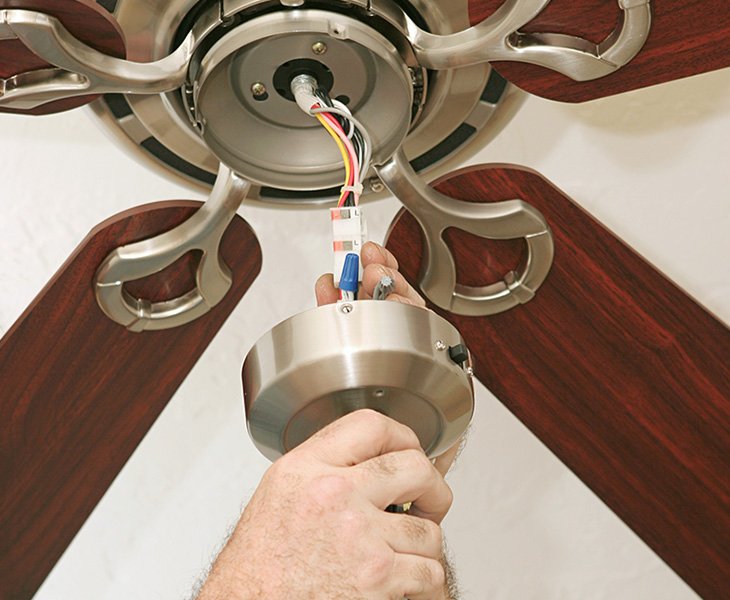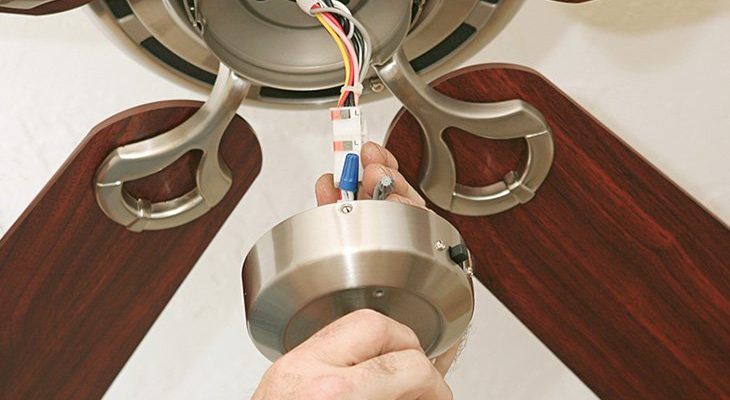
It’s easy to feel baffled when the remote works for the fan but ignores your command to turn the light on or off. These Westinghouse remotes usually promise simple, wireless control. When the light function won’t cooperate, though, it can be both annoying and confusing. Trust me, you’re not alone, and the good news is: most causes are pretty straightforward, even if they don’t seem obvious at first.
Understanding How Westinghouse Ceiling Fan Remotes Operate
Here’s the thing: a ceiling fan remote isn’t just a simple “on/off” switch. It’s basically a tiny wireless communicator. The remote sends a signal, often via radio frequency (RF), to the receiver hidden inside the fan’s canopy. That receiver acts as a translator for your commands—fan speed, light on/off, sometimes even dimming.
With Westinghouse, most remotes have dedicated buttons for both fan and light control. The light button typically sends a separate code to the receiver. If *everything* except the light works, the problem is likely in either the remote’s light button/circuitry, the receiver, or the light kit hardware itself. The fan and the light share a home, but they are basically two separate electrical “rooms” in the same house.
Honestly, this modular design means troubleshooting is often a process of elimination. Knowing what’s supposed to happen, and how the system works, makes it much easier to pinpoint what’s actually broken or disconnected.
Common Reasons the Light Button Isn’t Working
Let me explain what usually goes wrong: if the fan responds to the remote but the light doesn’t, something is breaking the chain between your finger and the bulbs. Sometimes it’s simple, other times not so much. Here are the most common culprits:
- Dead or loose batteries: Sometimes the remote still has just enough power to send a “fan” command, but not enough for the light. (This one is sneakily common—always check the obvious first!)
- Receiver issues: The receiver in the fan canopy might be partially faulty—working for the fan, but not passing along the signal for the light. Maybe a relay inside has failed, or a wire has come loose.
- Burned-out bulbs or loose bulbs: If the bulbs are dead or not screwed in tightly, the remote won’t stand a chance. It sounds basic, but trust me, it happens more than you’d think.
- Wiring problems: Sometimes, one of the wires connecting the receiver to the light kit has come loose, or wasn’t installed correctly in the first place.
- Remote needs to be re-synced or paired: After a power interruption or battery change, remotes can lose their “pairing” and become out of sync with the receiver—especially if you have other RF devices in the house.
In most cases, these can be fixed at home, with a little patience and a screwdriver.
First Steps: Simple Troubleshooting for Westinghouse Remotes
Before you break out the tools, try some easy fixes. About half the time, the solution is less dramatic than you’d expect.
- **Swap out the batteries**—don’t just check them. Even if your fan still responds, low batteries sometimes have trouble powering the extra circuit for light commands.
- Check the **bulbs**—unscrew and screw them back in, or swap them for fresh ones. It’s embarrassing to admit, but many a “broken remote” has been fixed just by replacing a bulb.
- Make sure the **wall switch** is on. If the wall switch cuts power to the light kit, the remote can’t do much, no matter how many times you click.
If your light suddenly starts working, congratulations. If not, you’ll want to go a little deeper.
Re-Syncing and Pairing Your Remote with the Ceiling Fan
You might be wondering: can a remote actually “forget” how to talk to its fan? In short—yes, absolutely. Westinghouse ceiling fan remotes can sometimes lose their pairing with the fan’s receiver, especially after battery swaps or a tripped circuit breaker.
To re-sync the Westinghouse remote:
- Turn off power to the fan at the circuit breaker for about 30 seconds, then turn it back on. This resets the receiver.
- Within 30 seconds, hold down the “light” button (sometimes labeled as “O/I” or bulb icon) on the remote.
- Wait for the light to flash or blink, if your model supports confirmation. (Some older versions don’t—just try the light function after a minute.)
Not all Westinghouse models have the same pairing or “learn” buttons. If the process above doesn’t work, check your manual for model-specific instructions. Still, this simple reset/pairing covers most scenarios.
Sometimes the simplest fix is just letting your fan and remote “re-introduce” themselves after an argument.
Checking and Resetting the Receiver in the Fan Canopy
If you’ve swapped batteries, tested the bulbs, and re-synced the remote, but the light function on your Westinghouse remote still doesn’t work, it’s time to check the receiver itself. This sounds trickier than it is. The receiver is a little black or white box tucked inside the canopy (that dome-shaped cover close to your ceiling).
Here’s how to check the receiver:
- Cut power to the fan at the breaker—never trust the wall switch alone.
- Carefully remove the canopy cover. Most models have a few screws or twist-lock tabs.
- Look for any disconnected wires, especially ones leading from the receiver to the fan’s light kit (usually blue or white wires).
- If you see burned, brittle, or disconnected wires, that’s probably your issue. Reconnect securely (match wire colors), or call an electrician if you’re unsure.
- Some receivers have a small reset button—press it, then turn the power back on and re-pair the remote.
The goal is to make sure the receiver is getting power and sending that power to both the fan motor AND the light kit. If only the fan side works, you might need to replace the receiver. Replacement receivers are sold as standalone units and are usually universal for that brand.
Comparing Universal vs. Westinghouse Brand Remotes
Here’s the thing about remotes: not all are created equal. If you’ve replaced your original Westinghouse remote with a universal one, it might not support every function, especially the light. Some universal remotes only “speak” the basic fan speed language, but skip the extras—like timed dimming or specific light functions.
In my experience, sticking with the original brand tends to work best with light controls. If you must use a universal remote, make sure it lists “Westinghouse” compatibility, and check that it supports both fan and light codes. Pay attention to the syncing/pairing steps—the dip switch codes (those tiny toggles inside the battery cover) must match on both remote and receiver.
Some folks find that even the right universal remote doesn’t play nicely with their older Westinghouse receivers. If you’re in that boat, sometimes the only fix is to replace both remote and receiver together, so they’re speaking the same “language.”
When to Replace Parts: Batteries, Bulbs, Receivers, and Remotes
After running through all the troubleshooting, you might be left with a bigger puzzle. How do you know which part to replace—the bulbs, the receiver, or the whole remote? Here’s a quick way to think about it:
- If the **fan speed** works via remote, but the **light never does**, it’s often the receiver or remote light circuit.
- If the light button feels sticky or doesn’t “click” right, the **remote itself** could be bad. Swapping it for a new one is easy (and usually not too expensive).
- If bulbs keep burning out quickly, suspect a **faulty light kit** or wiring issue, rather than the remote.
- If nothing responds after a power surge, the **receiver** might have fried. Replacement Westinghouse receivers are available online or at hardware stores.
Take your time with each step. Most issues can be solved at home—but if you see burnt wires or smell something “electrical,” it’s safer to call a professional.
Extra Tips: Preventing Future Problems with Westinghouse Remotes
Nobody likes fixing the same problem twice. Once you get your light function working again, there’s a few habits worth keeping:
- Use name-brand, fresh batteries. Cheap ones often leak or lose charge unpredictably.
- Clean the remote contacts every few months with a dry cloth—crumbs and dust add up.
- Don’t mix old and new batteries, or different battery brands in the same remote.
- Keep extra bulbs handy—especially if your light kit uses hard-to-find sizes or shapes.
- If your home has lots of RF devices (like smart home hubs), consider moving them further from the fan to avoid weird interference.
A little bit of maintenance now can save you another round of troubleshooting later. It’s like flossing: not glamorous, but you’ll be glad you did.
Wrapping Up: Getting Your Westinghouse Ceiling Fan Light Back in Action
Getting stuck with a stubborn light button on your Westinghouse ceiling fan remote can feel like fighting with a vending machine. But most of the time, the fix is just a few steps away—swapping batteries, resetting the remote, or checking for loose wires. Even if you’re not handy, most of these checks are straightforward and safe if you work carefully.
Remember, each part of the system—the remote, receiver, wiring, and bulbs—plays a unique role. Work through your troubleshooting one piece at a time, and you’ll almost always get your fan’s light shining again. If something doesn’t make sense, don’t hesitate to ask for help or look for your exact model’s manual. Odds are, you’ll end up with a brighter room, a working remote, and a little more confidence for the next home mystery.
